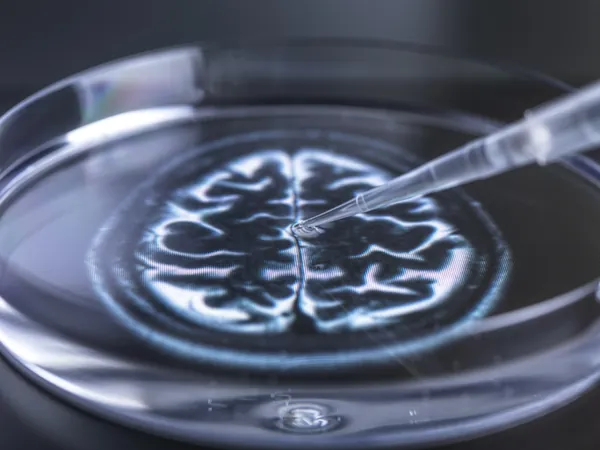
Groundbreaking Discovery of New Genetic Disorder Offers Hope for Families of Affected Children
2024-11-05
Author: John Tan
Introduction
A research team from around the globe has unveiled a groundbreaking diagnosis for a child suffering from a rare and unknown genetic condition, utilizing a tiny worm known as *C. elegans* to help decode the mystery. This remarkable intersection of genetic science and neurology has revealed a critical connection between the child's neurological symptoms and mutations affecting protein folding within cells, marking a vital step forward in genetic research and patient care.
Key Findings
Through comprehensive genome sequencing, scientists identified troubling mutations within the TRiC/CCT protein-folding machinery—a system essential for proper protein function within the body. This discovery has led to the recognition of a previously unknown type of genetic disorder, termed “TRiCopathies,” which underlies a spectrum of neurological challenges including brain malformations and seizures.
Publication and Expert Insight
The findings were published in the prestigious journal *Science*, in a paper titled “Brain malformations and seizures by impaired chaperonin function of TRiC.” Dr. Stephen Pak, a leading pediatric geneticist at Washington University in St. Louis, emphasized the significance of this research in providing clarity for many families who have faced the harrowing journey of undiagnosed rare genetic diseases. “Our study not only aids this family in understanding their child's condition, but it also eliminates the need for further unforeseen clinical tests,” he stated.
Case Study
The researchers focused on a young boy in Germany, who exhibited intellectual disabilities, low muscle tone, and brain abnormalities. The team pinpointed mutations in the CCT3 gene that could have been the source of his developmental issues. The CCT3 protein is an integral component of the complex that facilitates protein folding, and the researchers highlighted that “variants in seven of its eight subunits were identified—all impairing function through various mechanisms.”
Experimental Insights
Remarkably, experiments involving *C. elegans*—which possess a gene similar to human CCT3—revealed that the affected worms displayed noticeably slower movement compared to their normal counterparts. “We discovered that the genetic change reduces the activity of the normal protein, which in turn affects the protein-folding machinery,” explained Dr. Tim Schedl, who contributed extensively to the research.
Further Research
Further studies engaged zebrafish to explore the effects of CCT3 variants on brain development, while yeast models were used to examine its role in protein folding. Their innovative approach led to the identification of 22 additional individuals with overlapping neurological symptoms and genetic variants, all connected to defects in the protein-folding complex.
Implications
The implications of this research are enormous, as they highlight a previously unidentified genetic disorder significant enough to warrant attention in both medical practice and genetic counseling. “Our findings provide critical insights for clinicians and families across the globe,” Pak added, “meaning that if another patient presents with similar symptoms and a comparable genetic variant, they could soon receive a definitive diagnosis.”
Conclusion
This discovery not only opens new avenues for understanding genetic disorders but also sets the stage for potential therapeutic interventions aimed at correcting these molecular anomalies. As more research emerges, families affected by similar disorders will likely find renewed hope in the ongoing efforts to decode the complexities of genetics and to improve the lives of those impacted by TRiCopathies.





 Brasil (PT)
Brasil (PT)
 Canada (EN)
Canada (EN)
 Chile (ES)
Chile (ES)
 España (ES)
España (ES)
 France (FR)
France (FR)
 Hong Kong (EN)
Hong Kong (EN)
 Italia (IT)
Italia (IT)
 日本 (JA)
日本 (JA)
 Magyarország (HU)
Magyarország (HU)
 Norge (NO)
Norge (NO)
 Polska (PL)
Polska (PL)
 Schweiz (DE)
Schweiz (DE)
 Singapore (EN)
Singapore (EN)
 Sverige (SV)
Sverige (SV)
 Suomi (FI)
Suomi (FI)
 Türkiye (TR)
Türkiye (TR)